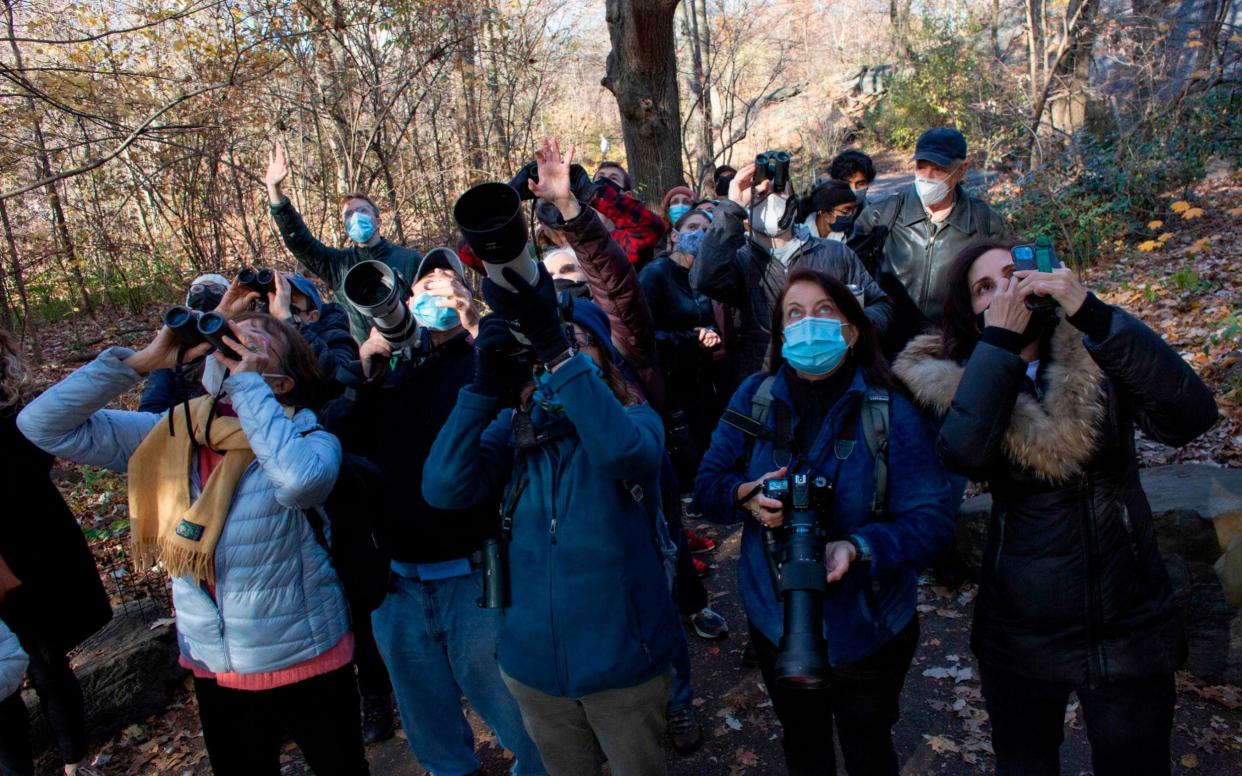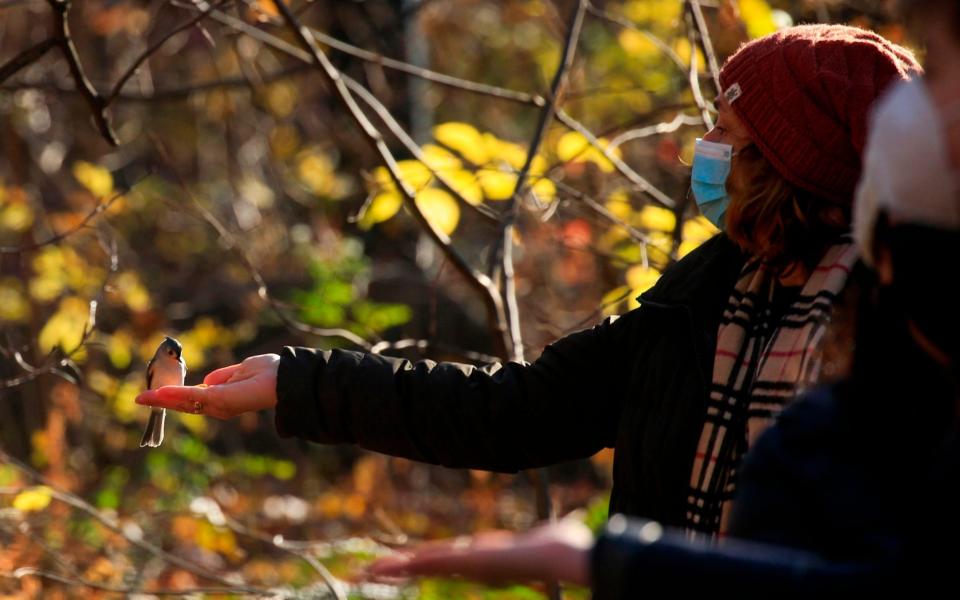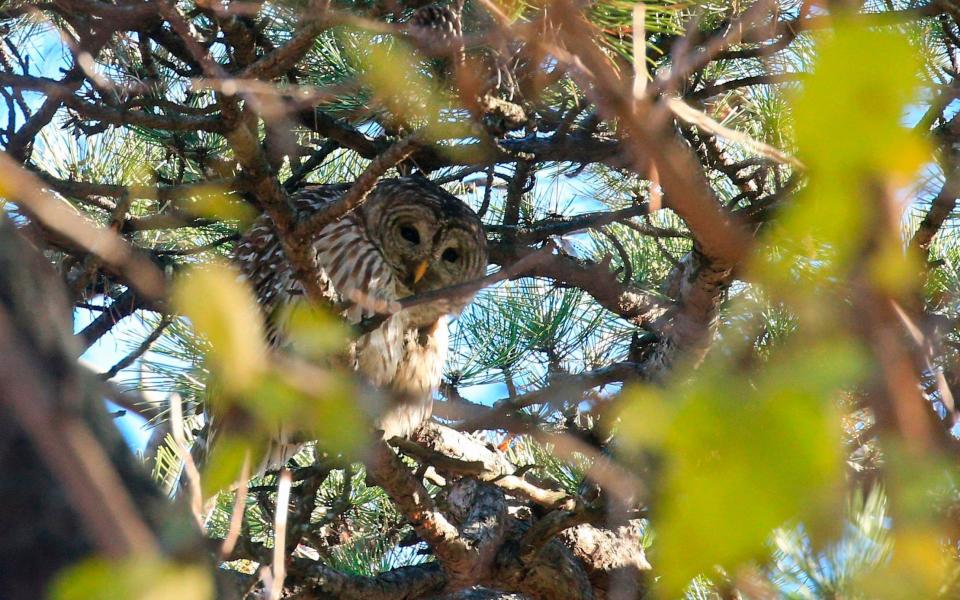Bird-watching: The hottest new pastime in locked-down New York

A crowd gathered on West 22nd Street in Manhattan on a crisp December day, as people stood squinting through binoculars and straining to take photos beside a row of neat brownstones.
It was not a celebrity they had come to see, but rather they wanted to catch a glimpse of the nesting Western Tanager, a yellow-breasted songbird seldom seen in New York.
A father had brought his children, husbands had turned up with their wives. Some had read of spottings of the bird on Twitter and wanted to see it for themselves.
“I’ve got really into birding in the last few months, and I didn’t want to miss the Tanager,” said Rob Maclean, a 43-year-old marketing company manager. "It's just as beautiful as it is in the pictures."
With the city stilled by the coronavirus shutdown, a growing number of New Yorkers have taken up bird-watching: the hottest new socially distanced pastime.

The meditative search for special birds - as many as 300 species of which live and migrate through New York City - has proved to be soothing in troubled times.
Central Park’s The Ramble, a protected woodland that has become the best birding spot in the US, has seen a huge increase in watchers, according to tourguide Robert DeCandido, known as ‘Birding Bob”, who offers $10 (£8) guided walks on weekends.
“There are two things happening here - there were fewer things to do, for example you can’t just show up at The Met any more as there's strict rules. Also, people don’t want to take the risk of being in enclosed spaces right now,” Mr DeCandido told The Telegraph.
Thread: A New York Story --On Sunday, I was walking in West Chelsea, and I saw what looked like a gaggle of paparazzi outside a brownstone. 1/8 pic.twitter.com/xhPiGFnU62
— Warren Leight (@warrenleightTV) December 9, 2020
After the virus struck New York in spring, killing more than 60,000 people, the city went into a months-long lockdown, which saw gyms and restaurants shut. And while many have since reopened, theatres, clubs and concert venues remain closed.
“They want to be outside," Mr DeCandido, who has led walks in the park for over 25 years, said. "So they started to look around on the web and my tours have picked up a whole bunch of new people.”
He said many told him they found themselves wanting to reconnect with nature, which is not in plentiful supply in America's most populous city.
“There were those who told me they’d just come back from their homes in Connecticut, where they had been sheltering at first, and couldn’t believe how many birds they had seen out their window,” said Mr DeCandido. “When they returned home, their curiosity was piqued.”
A big draw has been the recent arrival to Central Park of a barred owl that has been nicknamed Barry.
After the New York Times wrote about Barry last month, interest in Birding Bob’s tours exploded.
Though owls are typically nocturnal, Barry makes regular daytime appearances and seems to enjoy the attention of the paparazzi in the park.

He spends the day preening and showing off his feathers. Known to swoop low over the heads of birders and pick off unsuspecting chipmunks, he has gained online fame.
While business has been doing well, Mr DeCandido laments the loss of tourists in the city, who used to account for a big chunk of his clients.
David Barrett, who founded the Twitter account "Manhattan Bird Alert", said he observed a huge decline in birding activity in Manhattan in March when people were advised to stay home, leaving many afraid even to walk the streets or parks.
It was then Mr Barrett gained tens of thousands of followers to his account, which shared birding videos and photos to give viewers a way to experience nature even if they were stuck at home.
“The account also filled the entertainment gap that arose with the pause in sports and public events,” Mr Barrett, a 54-year-old mathematician and investor, told The Telegraph.
Then people started going out and exploring on their own, sharing their sightings of birds with Manhattan Bird Alert.
“With more people either not working or working from home with more flexible schedules, participation in birding is the highest I have ever seen it here,” he said. "The more people we have, the more chances that rarities get found."
Mr Barrett, who runs a database of Manhattan sightings, said the last nine months have been some of his most productive for observing rarities, including the Mississippi Kite, Sooty Tern, Henslow's Sparrow, and of course, the Western Tanager.
“I hope people will continue birding even after the pandemic is over,” said Birding Bob. “It’s important to be in touch with nature, especially when you live somewhere like New York.”

